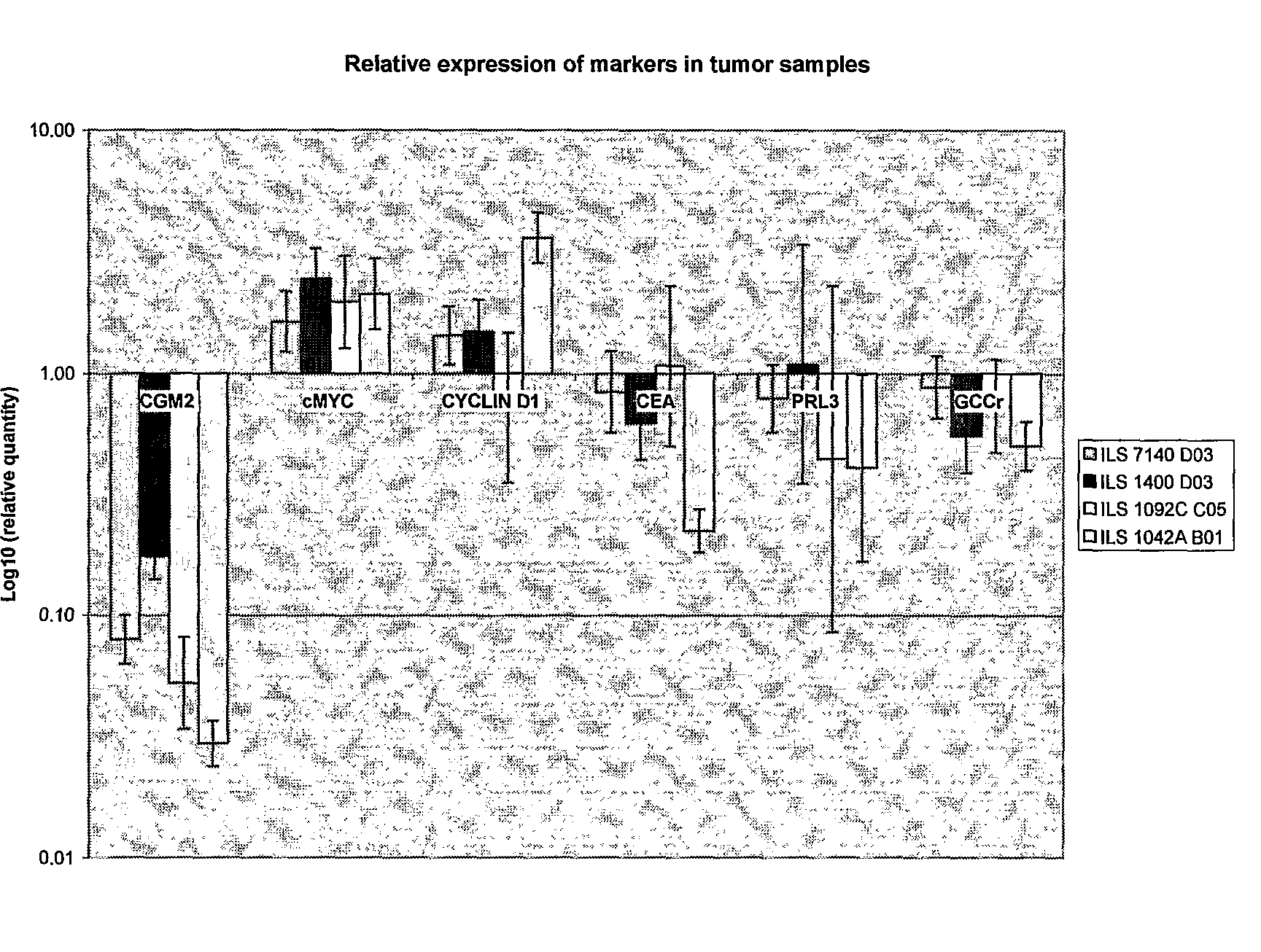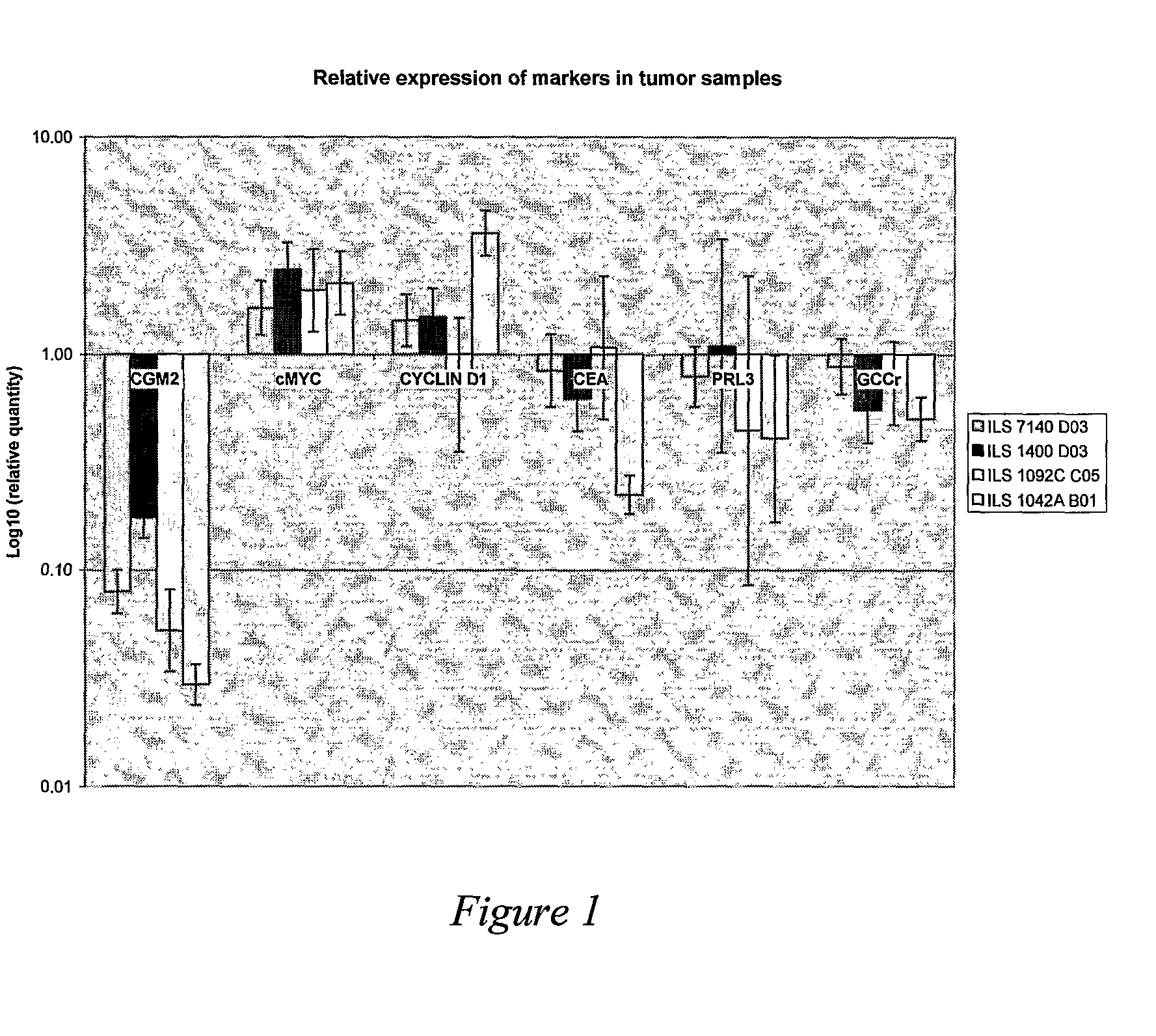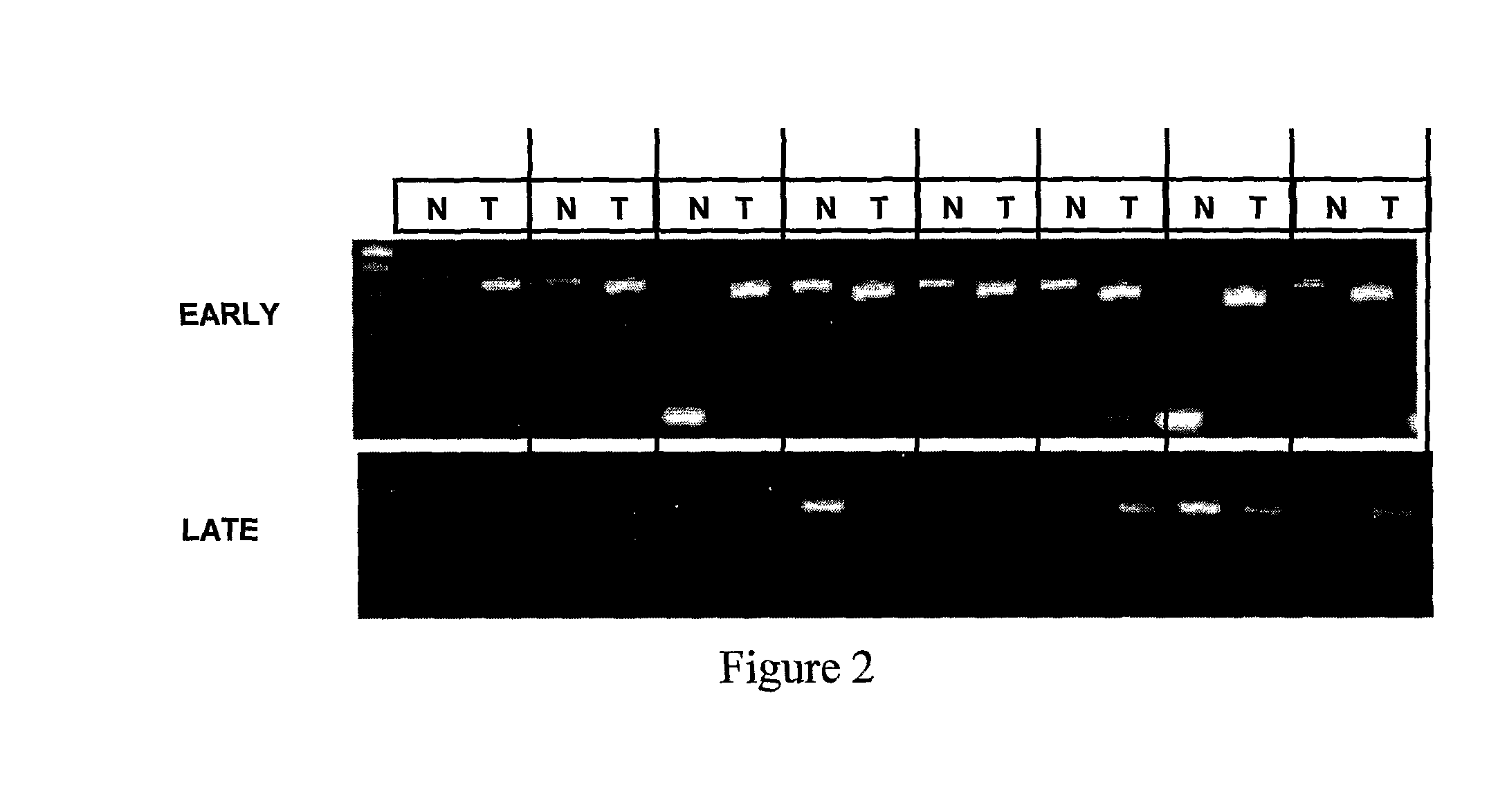Tumor Specific Genes and Variant Rnas and Uses Thereof as Targets for Cancer Therapy and Diagnosis
a tumor suppressor gene and gene technology, applied in the field of tumor specific genes and variant rnas, can solve the problems of affecting the detection effect of tumor suppressor genes, etc., and achieve the effect of reducing) expression or translation
- Summary
- Abstract
- Description
- Claims
- Application Information
AI Technical Summary
Benefits of technology
Problems solved by technology
Method used
Image
Examples
example
Tissue Sources
[0222]Appropriate patient samples were obtained with relevant clinical parameters, and patient consent. Histological assessment was performed on all samples and diagnosis by pathology confirmed the presence and / or absence of malignancy within each sample. Clinical data generally included patient history, physiopathology, and parameters relating to colon cancer physiology. The research specimens were divided into two groups; early-stage CRC (Dukes' stage A or B) and late-stage CRC (Dukes' stage C or D). Eight matched sets containing normal and malignant samples were obtained for each group, resulting in a total of 32 specimens. Two matched pairs from each group were used for the construction of DATAS™ libraries, the remaining samples were used for expression profiling studies by RT-PCR.
Quality Assessment of Tissue Samples
[0223]Six patient samples were purchased from Integrated Laboratory Services (ILS-Bio). Each patient sample contains a matched pair of normal colon tis...
PUM
| Property | Measurement | Unit |
|---|---|---|
| diameter | aaaaa | aaaaa |
| pH | aaaaa | aaaaa |
| time | aaaaa | aaaaa |
Abstract
Description
Claims
Application Information
 Login to View More
Login to View More - R&D
- Intellectual Property
- Life Sciences
- Materials
- Tech Scout
- Unparalleled Data Quality
- Higher Quality Content
- 60% Fewer Hallucinations
Browse by: Latest US Patents, China's latest patents, Technical Efficacy Thesaurus, Application Domain, Technology Topic, Popular Technical Reports.
© 2025 PatSnap. All rights reserved.Legal|Privacy policy|Modern Slavery Act Transparency Statement|Sitemap|About US| Contact US: help@patsnap.com



